

![]()
Book Reviews
 County Roads. County Roads.
 Rideau Hall: Rideau Hall:
 My Blue Country. My Blue Country.
 60 years in East Africa: 60 years in East Africa:
|
Features
News |

|
Squares:
Catherine Sheldrick Ross. Illustrated by Bill Slavin.
Grades 4 - 9 / Ages 9 - 14.
****/4
|
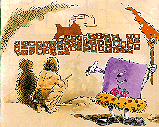 THERE IS NO DOUBT of the excellence of Squares. Once the book is in hand, a teacher will very quickly say, ``I want this book!"
THERE IS NO DOUBT of the excellence of Squares. Once the book is in hand, a teacher will very quickly say, ``I want this book!"
Squares will not only help teachers and children with math, but science, social studies, and art classes.

All aspects of living with squares are covered. For example: square areas, numbers, illusions and puzzles; city squares, square buildings and mazes; square designs, origami, and tangrams; cubes in legend, puzzles, prisms, and architecture. Puzzle answers are in the back. A glossary explains long words that might be new to some children, and a comprehensive index is included. Bill Slavin's colourful illustrations and diagrams add immensely to an understanding of the concepts.
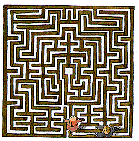
Catherine S. Ross has also written other titles in the ``shapes in Math, Science and Nature" series including the award-winning titles Circles and Triangles. Ross is Professor at the Graduate School of Library and Information Science at the University of Western Ontario. Bill Slavin has illustrated many children's books, including Earthdance and the ``Starting with Space" series. Kids Can Press publishes superb non-fiction for Canadian children.
Highly recommended.
Gerri F. Young works in Fort Nelson, B.C.
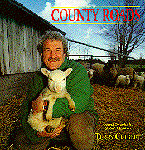
|
County Roads.
Written and illustrated by Terry Culbert.
Grades 7 - 12 / Ages 12 - Adult.
****/4
|
excerpt:
Working away in his dimly lit and cluttered shop is a bearded bear of a man called Lloyd Johnston. Using a coal forge along with hammers and tongs, you'd swear you'd stepped back into the nineteenth century. ``The family's been blacksmithing for five generations," said Lloyd. . . .
``I was educated to be an electrical engineer," said Lloyd, ``but when I graduated, I found that working with iron was more interesting to me. My schooling hasn't been a total waste because some of the principles of engineering have been a help. I just find that working with my hands is more satisfying than sitting behind a desk.". . . .
He spends a good deal of his time doing custom pieces for pioneer museums and historical sites. He's done structural steel work on the movie set of ``Agnes of God" and also on the television series ``Road to Avonlea".
THE AUTHOR OF COUNTY ROADS is probably well known to viewers of Global Television, who may also be familiar with some of the contents of this book, made of material Terry Culbert gathered for his popular television program. But for me it was all new, and I just kept reading from one story to the next, much as I would dip into a bag of peanuts -- couldn't seem to stop myself.
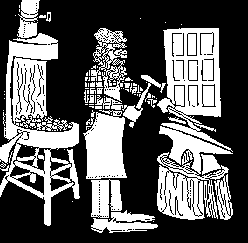
Besides being full of human interest, these stories of unusual people Culbert has interviewed for television are well illustrated with the author's cartoons or photographs. Most of the stories have two pages -- one for the story itself, the other for a full-page illustration. There are a few exceptions with longer stories and more than one illustration.
The subjects range from an unusual breed of lambs to a buffalo ranch; from a painter of First Nations people to a maker of handcrafted pine furniture. Well-known Canadians like Billy Bishop and Sir Harry Oakes are here, but there are also people who painstakingly work at their chosen careers -- denture makers, sign makers, blacksmiths, and watchmakers among many others. Over all, it struck me as a very typically Canadian book.
But in this age of computer spell checkers, doesn't anyone proofread assiduously? Though I know from past experience how easy it is for typos and misspelled words to escape an author's eye, in school-teacher fashion I found myself irritated by a number of lapses in this book. As I read further, however, I was so beguiled by the stories I persuaded myself I was being altogether too pernickety. If there is a second printing though (and I think there should be!), I've made a list which will be available on request. . . .
Highly recommended on many levels: high interest, attractive design, well illustrated, excellent vignettes of life in Ontario, and best of all, good value at this reasonable price.
Joan Payzant is a retired teacher/librarian in Dartmouth, Nova Scotia.
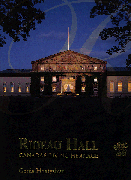
|
Rideau Hall:
Gerda Hnatyshyn.
Grades 9 and Up / Ages 14 - Adult.
****/4
|
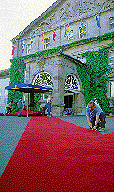 RIDEAU HALL: CANADA'S LIVING HERITAGE was published by the Friends of Rideau Hall to raise money to maintain the Governor General's residence and to purchase items to enhance the building's appeal. It is a magnificent coffee-table book that history buffs and monarchists will enjoy.
RIDEAU HALL: CANADA'S LIVING HERITAGE was published by the Friends of Rideau Hall to raise money to maintain the Governor General's residence and to purchase items to enhance the building's appeal. It is a magnificent coffee-table book that history buffs and monarchists will enjoy.
The text, as with many similar books, is factual and unimaginative. It is, however, very easy to read. What makes the book exciting are the striking photographs by Gene Hattori, the principal of F:11 Photographic Design, Saskatoon.
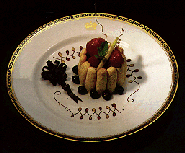
In Hattori's hands, Rideau Hall looks like one of the stately homes of Europe, a grand and beautiful estate. Hattori takes us on a photographic guided tour of Ottawa's vice-regal residence. Floor plans are provided throughout, though there is little need of them. Publication of this book should stimulate interest in the Rideau Hall and increase its reputation as one of Ottawa's most popular tourist attractions.
The role of Canada's Governor General is not well known. Most of the news from Ottawa concerns the activities of parliament, the prime minister, and the federal government. The press pays little attention to the Queen's representative in Canada, and rarely discusses his or her activities. The Governor General's political role is hardly ever discussed. Rideau Hall: Canada's Living Heritage attempts to rectify this shortcoming by explaining how that role fits into Canada's political system. This lesson in political science is very well done.
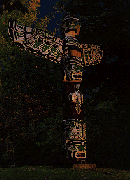
Another interesting feature of the book is the brief mention of past Governors General and their contributions to Rideau Hall. Gerda Hnatyshyn also explains the purpose behind the many honours awarded by the Governor General, including the Order of Canada and the Order of Military Merit.
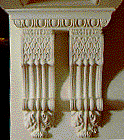
Rideau Hall: Canada's Living Heritage also contains many photos of the staff at work. We see the chefs preparing meals and members of the maintenance crew carrying out their duties. The book ends with some beautiful scenes of the Rideau Hall grounds. Readers may be surprised to learn the grounds contain a cricket pitch, tennis courts, and greenhouses.
Recommended.
Thomas F. Chambers is Professor at Canadore College of Applied Arts and Technology, North Bay Ontario.
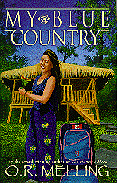
|
My Blue Country.
O.R. Melling.
Grades 10 - 12 / Ages 15 - 19.
**/4
|
excerpt:
January 15, 1973Some of the kids have been smoking dope. This could jeopardize the whole programme. The Malaysian government is totally against drugs, we are talking the death penalty. We could all be sent home in disgrace and the project ended before it even get going. I could kill those selfish bastards myself. Everyone knows who did it but the question is -- do we tell Val? It's all so depressing and confusing. I mean, Katie, Jean-Francois, Ray and a few others drank a bottle of Scotch in our room tonight. Cyn and Louise were very upset, especially since the guys shouldn't have been in our room in the first place. And isn't that as bad as drugs since it's against the rules too, and Muslims are anti-alcohol as well as anti-drugs?
O.R. MELLING'S EARLIER BOOK, The Hunter's Moon, was an award winner. The present book, My Blue Country, is based on the author's experience in the first Canada World Youth Exchange to Malaysia. It is presented as the journal of seventeen-year-old Jesse McKinnock of Calabogie, Ontario, and declared ``a work of fiction."
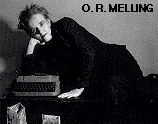
There is much worthwhile in the story, with strong characterization, an excellent presentation of the variety of outlooks of students representing different regions, races, religions, and languages of Canada, descriptions of their experiences in Malaysia, and their individual reactions to the Canada World Youth exchange program. No doubt it will have appeal to some of today's readers, but I reacted badly to it and was not able to quell my feeling that although I was reading fiction, it reflected all too clearly unsavory aspects of real life today.
The program itself seems to have been typical of government schemes that are poorly organized and wildly extravagant. The students who made up the group with which the story is chiefly concerned are so poorly mixed as a team -- and even unwholesome -- that it appears no screening of their aptitudes or attitudes took place. The leaders are wishy-washy and do not provide enough guidance or supervision. Although Jesse McKinnock herself is a fairly tame character, the escapades of the other members of her group would certainly not be guaranteed to give Canadian youth a good name.
One of the reasons this disturbed me was because of an experience I had in England in 1985. In conversation with an English friend, he asked, ``What has happened to Canadian Scouts? Some years ago at the Jamborees they were at the top of the heap, but their behaviour at the recent ones has been simply terrible."
I was at a loss for an explanation, but mumbled vaguely about television, drugs, and alcohol. This book makes it all too clear.
Not recommended.
Joan Payzant is a retired teacher/librarian in Dartmouth, Nova Scotia.
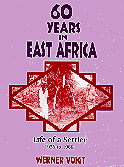
|
60 years in East Africa:
Werner Voigt.
Grades 10 and Up / Ages 15 - Adult.
***/4
|
AFTER FINISHING HIGH SCHOOL IN 1923, Werner Voigt enrolled in the German Colonial School in Witzenhausen where he graduated with a diploma in Tropical and Subtropical Agriculture. This suited him ideally for life in a German colony, and he was soon hired to work in Tanganyika (German East Africa before the First World War).
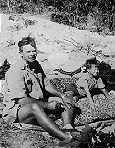
For much of the next sixty years, Voigt worked on various plantations in Tanganyika, and eventually bought his own farm. During the Second World War he and his family (and all Germans whatever their politics) were treated as prisoners of war by the British and interned. As a result, the Voigts lost all of their possessions and had to start over after the war.
The colonial life described by Werner Voigt is today considered to have been a bad thing for the colonized people. Africans and Asians became subjects of their masters and their laws, politics, and economic systems became European. But Voigt paid little attention to these broader changes that took place in Tanganyikan life while he was there and describes a colonial life that sounds idyllic. He considered himself a sort of Robinson Crusoe and his experiences with African people to have benefitted both them and himself and his family.

Most of 60 Years in Africa reads like an adventure book, as Voigt recalls his travels through an unspoiled Africa encountering lions, snakes, hippos, and other creatures. Some of his anecdotes have considerable humour. The book is valuable for the insight it gives into the colonization of east Africa and the difficulties Europeans encountered in the tropics. It is, however, one-sided. Though the Africans Voigt encountered were, on the whole, friendly and helpful, there is no indication of what they thought of the experience.
Voigt tells his story with an engaging enthusiasm and an almost childlike simplicity. Sometimes, however, the translation from the German (60 Jahre in Ost Afrika) results in awkward English -- not Voigt's fault, but the fault of a too-literal translation. What is in other ways a fine book would have been even better had the prose been rendered into a more readable English.
Recommended for anyone interested in the colonial experience from the European perspective and in the spread of European civilization in Africa.
Thomas F. Chambers is Professor at Canadore College of Applied Arts and Technology, North Bay Ontario.

Despite the difficulties there were over 300 correct answers from different entrants throughout the year. Of the 38 possible correct answers various students from Yorkhill Elementary School in Thornhill, Ontario answered 21 correctly.
Joanne Cantalini's Grade 7/8 class at Gregory A. Hogan School in Sarnia, Ontario led the way, for the second year in a row, for those who participated as a class, with 15 correct answers. Mrs. Walker's Grade 9 Social Studies Class at Pitt Meadows Secondary School in Pitt Meadows, British Columbia answered 11 questions while Jane Scaplen's Gr. 6 French Immersion Class at Sacred Heart Elementary School in Marystown Newfoundland answered 10 correctly. For contestants who participated individually Noah Moser of Colonel By Secondary School in Gloucester, Ontario led the way with 9 correct answers while Ian Raska also of Colonel By answered 8 correctly. Congratulations to these contestants and to all who participated.
Look for the first question of the 1996-97 school year during the week of September 8, 1996.
-- Steve_Caldwell@colby.on.infoshare.ca
The White House, home of the President of the United States, got its name when it was white washed to cover fire damage incurred when British troops burned the city of Washington in 1814. Washington was burned at least partly in retaliation for the burning of a Canadian town by American troops.What was the name of this Canadian town?
 Winners
WinnersSince this is an Olympic year let's go back to an Olympics question for our final question of the year. This is a two-part ``Who am I?" question. You must get both parts to get credit.
- In 1992 I suffered a training accident two months before the Barcelona Olympics, in which I broke my ankle and had serious ligament damage to the ankle.
- After medical treatment I decided to resume my training for Barcelona, which by now, was only a few weeks away.
- I competed in Barcelona and won a third place bronze medal.
- This summer I will attempt to win a gold at Atlanta.
- Who am I?
- What sport do I compete in? Be precise.
 Winners
Winners
General information about the Great Canadian Trivia Contest.
![]()
|
Executive Assistant Peter Tittenberger  e-mail: cm@mts.net
e-mail: cm@mts.net
|
 majordomo@mbnet.mb.ca
majordomo@mbnet.mb.ca
Postal address:
CM
100 Arthur Street, Suite 208
Winnipeg, MB R3B 1H3
![]()
Copyright © 1996 the Manitoba Library Association.
Reproduction for personal use is permitted only if this copyright notice
is maintained. Any other reproduction is prohibited without
permission.
Published by
The Manitoba Library Association
ISSN 1201-9364
![]()
WELCOME | BOOK REVIEWS BY AUTHOR | BOOK REVIEWS BY TITLE
AUDIO/VIDEO/CD-ROM REVIEWS | VOLUME II INDEX | SEARCH